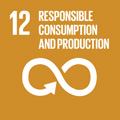- Docente: Alessandra Tolomelli
- Credits: 6
- SSD: CHIM/06
- Language: Italian
- Teaching Mode: In-person learning (entirely or partially)
- Campus: Bologna
- Corso: Second cycle degree programme (LM) in Molecular and industrial biotechnology (cod. 9213)
Learning outcomes
At the end of the course the student knows the enzymatic mechanisms, the immobilization techniques and their applications in membrane reactors, and the stereochemical aspects of the biocatalysis; he can also apply these skills to the solution of biotechnological problems and to the stereoselective design and synthesis of new molecules. In particular, i) he is able to choose biocatalysts for the aforementioned syntheses on the basis of economy, sustainability, turnover and overall convenience of the process, ii) he is able to identify any critical aspects of the enzymatic process and propose solutions, iii) he is iable to evaluate the convenience in the replacement of biocatalytic methods to traditional technologies on the basis of the requalification principles of industrial processes. These skills are applicable to different sectors, ranging from the production of macroscale products from biomass, to the production of energy, to the production of products for the pharmaceutical, food, textiles and finally to the design of diagnostic tools.
Course contents
1. Basic concepts in biocatalysis
1.1. Kinetic resolution of racemic mixtures
1.2. Dynamic kinetic resolution of racemic mixtures
1.3. Desimmetrization of meso compounds
1.4. Asymmetric transformations of prochiral substrates
2. Classification of enzymes
2.1 Simple enzymatic reactivity: Hydrolase
2.2 Enzymes that need cofactors: Transaminases
2.3 Enzymes with different mechanisms: Phosphatases
2.4 Coupled enzymatic reactions for the regeneration of cofactors: Oxidoreductase
3. Immobilization of enzymes
3.1 Immobilization on carrier
3.2 Immobilization by cross linking
3.3 Immobilization by entrapment
3.4 Membrane and hollow fiber reactors
4. Reaction design
4.1 Optimization of the reactor
4.2 Optimization of parameters and reaction conditions
4.3 Process scale-up
4.4 Product recovery
5. Sustainable biocatalytic processes
5.1 Parameters of the "green chemistry"
5.1 Combination of chemical and enzymatic reactions in water
5.2 Combination of chemical and enzymatic reactions in alternative solvents
5.3 Waste reduction and catalyst recovery
6. Industrial and molecular biocatalytic applications
6.1 Biomass transformation
6.2 Biocatalysis in the synthesis of drugs
6.3 Biocatalysis in materials science
6.4 Nanobiotechnologies: enzymes on nucleic acids for development of biosensors
Readings/Bibliography
A. S. Bommarius, B. R. Riebel “Biocatalysis – Fundamentals and applications'” Wiley VCH editor.
K. Faber, “Biotransformations in Organic Chemistry” Springer editor.
R. Patel “Green Biocatalysis”, Wiley VCh Editor
J. A. Tao, R. Kazlauskas, “Biocatalysis For Green Chemistry And Chemical Process Development” John Wiley & Sons, Editor.
K. Drauz, H. Grger, O. May “Enzyme Catalysis in Organic Synthesis”, Wiley VCH editor.
Teaching methods
Lectures with PowerPoint presentations (40 hours in the period October-December)
For the academic year 2021/2022, online lessons/ in room lessons will be offered depending on the situation of CoVID-19 emergency
Exercises in the laboratory of Organic Chemistry of the Department of Chemistry "G.Ciamician" (5 afternoons in January). Students will perform biocatalysis experiments, working in groups of two. Attendance at the laboratory will be verified by signature.
In consideration of the activities and teaching methods adopted, the attendance of this training activity requires all students to carry out e-learning of modules 1 and 2 [https://www.unibo.it/it/servizi-e -opportunities / health-and-assistance / health-and-safety / safety-and-health-in-places-of-study-and-internship] and to take part in module 3 of specific training on safety and health in study places . Information on dates and methods of attendance of module 3 can be found in the specific section of the degree program website.
Assessment methods
The examination takes place in written form. In particular, 25 multiple-choice questions are addressed to the student, to each of which a value of 1 point is associated, and an open question to which the value of 8 points is associated. The outcome of the test is assessed by the level of understanding, critical analysis and in-depth study of the subject that the student was able to perform.
Teaching tools
Power point presentations of the lessons made available through the teaching on line portal
Office hours
See the website of Alessandra Tolomelli
SDGs



This teaching activity contributes to the achievement of the Sustainable Development Goals of the UN 2030 Agenda.
